Wide Format
The same principles apply for supplying wide format artwork as for offset and digital printing with a few minor adjustments:
-
Images
Photos and Illustration resolution should be 300dpi, however for some larger signage 150dpi is appropriate for reducing the file size. Here is a guide to use for deciding your resolution dependent on the required viewing distance.
Viewing Distance Minimum Resolution 0.6m 300 dpi 1m 180 dpi 1.5m 120 dpi 2m 90 dpi 3m 60 dpi 5m 35 dpi 10m 18 dpi 15m 12 dpi 50m 4 dpi -
Colour
All colours are converted to CMYK (no PMS colours, RGB, LAB etc).
-
Fonts
Fonts should be embedded or outlined.
-
Bleed
Crop & bleed marks included. 5mm bleed for single sided print and 10mm bleed for 2 sided print.
-
Size
Trim size of your document matches the order specifications. Occasionally a file can be supplied at a smaller scale, but this must be discussed with CMYKhub staff before placing the order.
-
Dielines
Any dielines are overlaid onto the artwork as a spot colour and set to overprint. All cut lines are to be supplied as 1 spot colour, whilst crease lines should be supplied as a 2nd spot colour.
What Type of Dieline Do You Need?
When choosing router or kiss cutting in the wide format section of our quoting page, please refer to the below table to help ascertain what type of dieline you’ll need:

Basic (Circle)
Any shape where the knife doesn’t have to lift and can cut in one smooth path. Adding any extra cuts to the dieline, even drill holes, will require a different type of dieline as the router has to lift from the cutting table and re-position to cut the holes.

Standard (Star)
Basic irregular shapes and simple shapes requiring cutouts or holes. This is what you would choose for anything requiring drill holes.

Detailed (Outline)
Outlines of people (standees), text (stickers), or multiple imposed stickers on sheets.

Complex (Box)
Cartons or display stands that require cutting and creasing. This requires the use of two different cutting tools which takes time to change over.

Strut Displays
It’s important to note that the bottom of any strut display needs to be flat so the final product can stand.
This is especially important to remember when creating a dieline for people – outlining the feet should be avoided. It is best to avoid any fine details and simplify shapes as much as possible. Any sharp corners should be rounded to avoid delicate points and sharp edges.
If your dieline is a person, it’s also good practice to fill in the space between the legs with a background colour, to ensure the strut (on the rear) is hidden.
When setting up a base for a life-size cut out, you’ll want to set up the base to be almost as wide as the widest part of the character. Depending on the pose, though, it can be smaller. If the character leans toward one side more than the other, we’ll want to compensate by adding more length to the base on that side.

Kiss Cut
A kiss cut added to an adhesive helps make the sticker easier to pull off from the backing. When supplying a dieline for a kiss cut, consider the size of the sticker and add at least 10mm to the overall artboard size.
For example, if you have a circular label that is 50mm in diameter, it should be supplied on a 60 x 60mm canvas.
-
Page count
Page count matches the order specifications and is combined into 1 PDF file per kind of artwork. ie. 2 sided posters = 2 page PDF
-
White Ink
General Tips
- A White Ink layer is required to indicate all parts of the design where white ink is to be printed. This includes areas that are to be only printed in white, along with areas that need to be opaque ie CMYK + white.
- The White Ink layer must only contain the artwork that is to be printed in white ink (no CMYK components).
- The White Ink layer must be:
- Set on top of all other layers
- In a spot colour (please ensure it is a visible colour and is named WHITE)
- Set to overprint
Choosing the best white ink option for your product
Our wide format roll machines have the capability to print White Ink.
White ink should be used on clear substrate products like window stickers to strengthen the appearance of the CMYK artwork. The white ink behind the CMYK artwork creates a more opaque finish to the print area.
- CMYK + White Ink Ideal for transparent media being applied to an opaque surface.
- Reverse Printed CMYK + White Ink Ideal for transparent media that can be viewed from the non-printed side.
Please download this detailed ordering and artwork supply guide for further information.
- Templates
-
Eyelets
Please refer to the following guide:
-
Direct to Film
DTF Artwork Setup
-
All CMYK graphics require white ink behind them.
-
White ink must be supplied as a spot colour named White Ink.
-
Set the spot colour to overprint.
-
Place white ink layer above CMYK in Illustrator.
-
White-only areas should be created using the White Ink spot colour.
- Minimum font size 10pt, minimum stroke thickness 1pt
-
You may impose your artwork within the 580x1000mm and gang as you wish
-
If providing 1up artwork we can gang it for you, but we can't gang multiple kinds of artwork on 1 sheet.
-
We can certainly gang your multiple kinds artwork for you or add white ink using artFIX - select the option in Hublink or speak to the Orders Team
Download the Full Artwork Guide (PDF)
-
